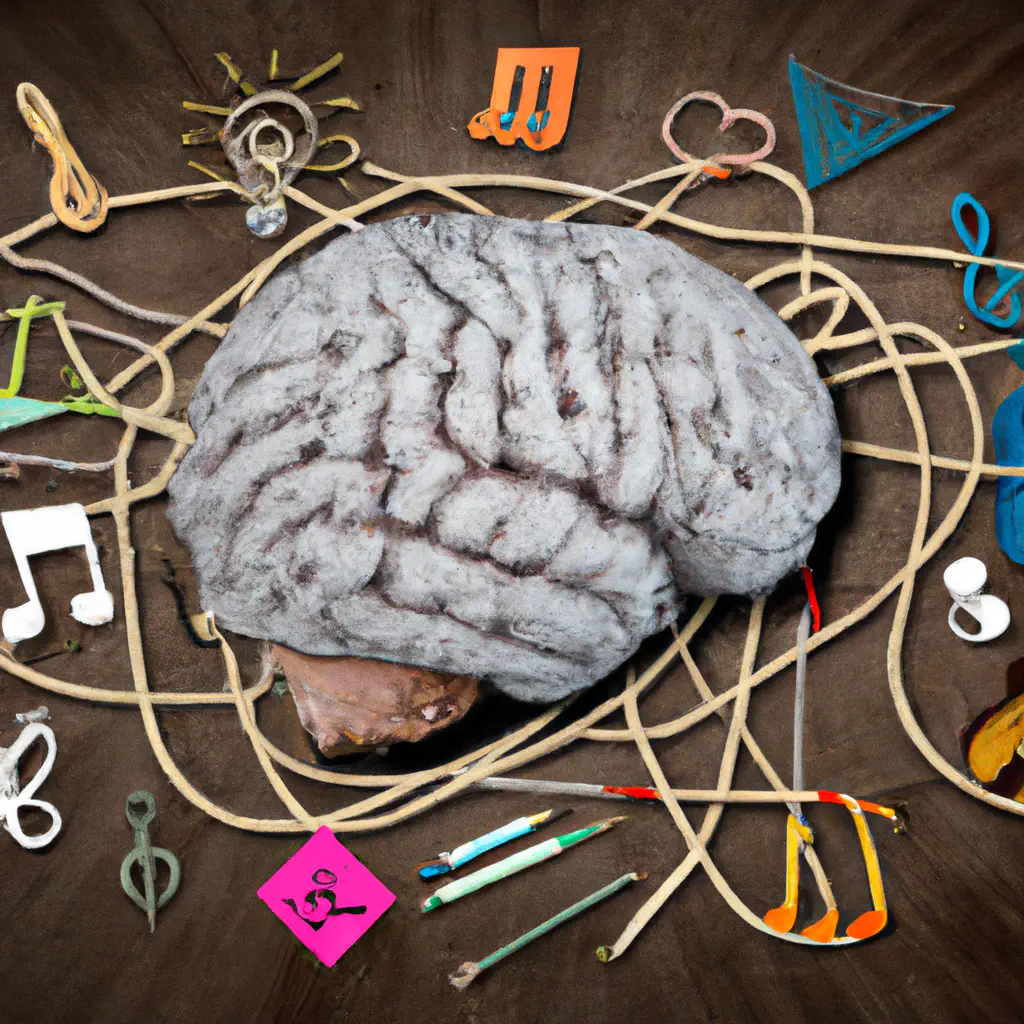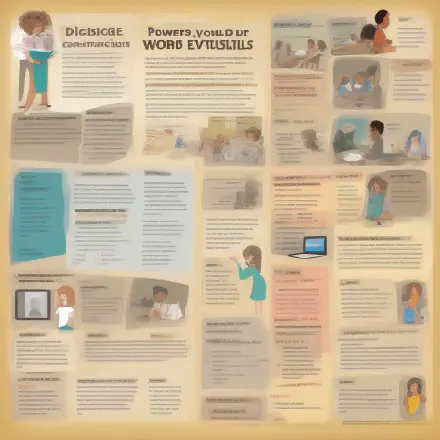
I. Introduction
Our mind, does it have an end to its mental agility and cognitive capabilities? Indeed, the human mind possesses an enormous and still largely untapped potential. A universe within itself, it holds the power to create, to learn, and to surpass boundaries. Leveraging that power, that neural fire, can help us master new skills, comprehend complex ideas, and push the boundaries of our existing knowledge.
One key ability that helps us tap into this potential efficiently is ’learning’. Many perceive learning as a skill one acquires during their early schooling years, but its significance is much more profound and enduring. Learning, in reality, is a continuous process that influences our development and progress throughout our lives.
Learning is like a gateway to personal development and growth. With more knowledge and skills, we open new doors to opportunities, innovation, and even self-improvement. Regardless of our age or the phase of life we are in, learning helps us look past our limitations, makes us curious and keeps us engaged with the world.
Although the significance of efficient learning is widely appreciated, there are many misconceptions associated with it. For instance, many individuals believe that learning efficiency is an innate gift, conferred only to a handful of ‘chosen ones’. Some others perceive it as impractical or impossible to enhance one’s learning abilities, especially later in life. However, these beliefs and many more are obstacles that impede our growth, keeping us from exploring our true learning potential.
In the upcoming sections, we will debunk several such myths and misconceptions surrounding learning. Further, we’ll explore how our brain learns, the science behind it, and delve into some successful strategies for efficient learning. We will also discuss practical applications of these strategies to master various skills. Stay with us as we embark on this fascinating journey of unraveling the depths of learning and our brain’s immense capabilities. Let’s find out how we can make learning a more enjoyable and productive process.
II. Debunking myths about learning
When it comes to learning, specifically adult learning, several misconceptions cloud our understanding. Here we are busting some of the most common myths that surround learning.
A. Myth 1: You have to be born with it
The first and most common myth about learning is that you must inherently possess talent to acquire a particular skill or expertise. The timeless debate of talent versus hard work is an ongoing discussion enhanced by anecdotal evidence and personal experiences. If we believe that talent is the only route to success, it will limit our learning potential and our drive to explore new domains.
“Talent is cheaper than table salt. What separates the talented individual from the successful one is a lot of hard work.” - Stephen King
The truth is that talent and hard work function in harmony. Talent may provide an initial push, but it is the relentless hard work and practice that bring results. Undoubtedly, some individuals may be inclined or predisposed towards certain skills or domains due to their DNA, but it is never an absolute determinant of success and expertise.
B. Myth 2: You can’t teach an old dog new tricks
The famous saying that old dogs cannot learn new tricks is an overgeneralization that undermines lifelong learning. While our brains and cognitive skills do change as we age, it doesn’t mean we lose our ability to learn new skills or adopt new behaviors.
“Anyone who stops learning is old, whether at twenty or eighty. Anyone who keeps learning stays young. The greatest thing in life is to keep your mind young.” - Henry Ford
Lifelong learning is not just important but also rewarding and empowering. In fact, research indicates that continuous learning can help stave off cognitive decline and boost mental health in older adults.
C. Myth 3: Some people are left-brained or right-brained learners
The idea that some people are logical, detail-oriented, and analytical (left-brained) while others are creative, intuitive, and thoughtful (right-brained) has been popularized over time. This myth has been used to explain why different individuals have diverse learning styles or why some people are naturally inclined towards certain fields.
However, modern research and studies show that the brain isn’t as dichotomous as we make it out to be. According to a study published in the journal “Plos One”, there isn’t a prominent hemisphere dominance in individuals. Cognitive processes engage different parts of the brain and not just one side. So dividing learners as left-brained or right-brained is a simplification that doesn’t match the physiological and neural complexity of our brains.
“No matter how we looked at it, we just couldn’t find any evidence that the whole notion of left-brain and right-brain was correct.” - Jeff Anderson, M.D., Ph.D., University of Utah
In conclusion, understanding and debunking these myths can empower learners to take control of their learning process. It emphasizes the importance of individual hard work, lifelong learning, and holistic brain functions in learning new skills or concepts. The process of learning is a complex one that cannot be dissected into black-and-white categories. Understanding this can help us become effective and efficient learners.
III. Exploring the Science of Learning
Undoubtedly, learning is a powerful process that allows us to continuously adapt and evolve. To harness this power effectively, we must first understand the science behind it. How does our brain process new information? What role does neuroplasticity play in learning? And, what are the factors affecting our learning process?
A. How the Brain Learns New Information
Understanding how the brain learns new information allows us to better tailor our learning strategies. Our brain contains billions of neurons, which are essentially the cells responsible for processing and transmitting information. When we learn something new, these neurons connect with each other and form networks or neural pathways.
“Every time we learn a new fact or skill, we create or strengthen a neural pathway.”
As we continue to review and practice the new information, these pathways get stronger, allowing us to recall and use the information more readily. This process is also known as consolidation.
B. The Role of Neuroplasticity in Learning
Neuroplasticity is a fundamental principle of learning. The term refers to the brain’s ability to change and adapt as a result of experience. It can alter its structure and function by creating new neuronal connections or reorganising existing ones.
In the context of learning, neuroplasticity allows our brains to:
- Develop new skills and learn new information
- Recover from brain injury
- Adapt to new experiences and environments
“Neuroplasticity is the reason why repetition aids learning. Each time we review or practice, we reinforce the neural pathway associated with the information or skill.”
C. Factors That Enhance or Hinder Learning
Certain factors can either enhance or hinder our learning process.
Enhancing Factors:
- Regular Practice: Consistent review and repetition strengthens neural pathways, making recall easier.
- Healthy Lifestyle: Regular exercise, a balanced diet, and proper sleep contribute positively to brain health and learning capacity.
- Positive Motivation: Desire to learn drives incentive for the brain to form new connections.
Hindering Factors:
- Stress: Chronic stress can impair the formation of new neural connections.
- Lack of Sleep: Proper rest is crucial for memory consolidation.
- Distractions: Learning in an environment with multiple distractions can make it difficult for the information to encode in our memory.
Through exploring the science of learning, we have shined a light on how this intricate process works and how we could sculpt it for our advantage. Harnessing the power of our minds involves understanding how our brains process information, acknowledging the importance of neuroplasticity and being aware of both beneficial and detrimental learning factors. The following section will put this knowledge to use as we delve into effective learning strategies.
IV. Strategies for Efficient Learning
As we have discovered, learning is not a simple process. It encompasses a multitude of cognitive skills and requires the amalgamation of various methods to truly enhance our absorption and retention of information. Here, we will present several research-backed learning strategies that have shown to dramatically increase learning efficiency.
A. Strategy 1: Spaced Repetition
Spaced Repetition is a learning method that is designed to increase the efficiency of the learning process. The strategy focusses on reviewing information at increasing intervals over time. By revisiting material repeatedly over a long time, the brain strengthens the neural associations with this information — and you remember the information for longer periods.
“The forgetting curve theory suggests that without active recall, our memory for new information decays quickly. However, with spaced repetition, each review session strengthens the memory.”
B. Strategy 2: Interleaved Practice
Rather than focusing on learning one topic or skill at a time (blocked practice), interleaved practice involves switching back and forth between various topics or skills. This strategy forces the brain to make connections between different areas of study, thereby fostering an understanding of the material at a deeper level.
| Blocked Practice | Interleaved Practice |
| ------------------- | -------------------- |
| Topic A, A, A, B, B | A, B, A, B, A, B |
C. Strategy 3: Elaborative Interrogation
Elaborative interrogation is a sophisticated name for something quite simple—asking “why”. This method encourages learners to ask questions about the material as if in an interrogation, prompting a deeper level of thought and engagement. This way, a personal connection to the topic is established, enhancing comprehension and retention.
“The important thing is not to stop questioning.” — Albert Einstein
D. Strategy 4: Self-explanation
The strategy of self-explanation involves explaining to oneself what you have just learned or read. The act of explaining the information in your own words is a method of processing the material on a deeper level, engaging both understanding and memory.
“The best way to understand something is to explain it to someone else.”
E. Strategy 5: Memory Palace Technique
The Memory Palace is a method of memory enhancement which uses visualizations of familiar spatial environments in order to enhance the recall of information. It capitalizes on the brain’s natural ability to spatially organize thoughts and memories.
In the Memory Palace technique, you visualize each item or concept in a specific context — like a room in your ‘palace’. This technique associates the abstract (information you’re learning) with the concrete (familiar physical locations). This aids recall as you mentally walk through your palace.
Each of these strategies is powerful on its own. However, when used in combination, they can transform your learning practice. Importantly, these strategies are not limited to textbook learning and can be incorporated into all aspects of your life where learning occurs.
V. Applying Learning Strategies in Different Fields
A. Case Study 1: Learning a New Language
Learning a new language can be a daunting task. A scattered approach can lead to frustration and eventually giving up. However, let’s see how the strategies mentioned earlier can be applied effectively in language learning.
Spaced Repetition: You can organize vocabulary and grammar structures into flashcards and review them periodically. For example, review new vocabulary on Day 1, then on Day 3, Day 7, and so on. This approach helps to move information into long-term memory.
Interleaved Practice: You should mix the practice of various language skills like reading, writing, speaking, and listening instead of focusing on a single one. This diversified approach will enhance your overall language acquisition.
Elaborative Interrogation: Whenever you learn a new word or phrase, ask yourself how it fits into what you already know. How does the word work in a sentence? What are its synonyms or antonyms? This will deepen your understanding of the new word or phrase.
Self-Explaination: Language is all about context. When learning new vocabulary or grammar rules, try to relate it with real-life situations and devise stories or examples related to them. This integration with meaningful context will make the learning stick.
Memory Palace Technique: It’s ideal for remembering vocabulary. Associate each new word with a visual image and place it in a particular room of your imaginary palace.
B. Case Study 2: Mastering a Musical Instrument
Music is another field where efficient learning strategies can be effectively applied.
Spaced Repetition: Divide the musical pieces or exercises into small chunks and then practice them repeatedly over a period of several days.
Interleaved Practice: Instead of practicing one piece until it’s perfect, switch between different pieces or scales. This method keeps the practice challenging and aids in overall skill development.
Elaborative Interrogation: Whenever you’re learning a new piece, understand its structure, key, chord structure, and scale. Ask yourself why the composer chose the specific chords or scales. Analyze the piece thoroughly.
Self-Explaination: Try to explain the piece or exercise to yourself or a friend. Imagine you’re teaching it to someone else. This will help reinforce your understanding of the musical piece.
Memory Palace Technique: Visualize the sheet music in blocks and place each block in a specific room of your ‘palace’. This technique will be particularly effective for remembering long pieces.
C. Case Study 3: Gaining a New Tech Skill
The tech industry is ever-evolving, and keeping yourself updated with new skills can be challenging. Let’s see how our learning strategies can be applied.
Spaced Repetition: Learning a programming language or mastering a software tool may involve learning a lot of commands or codes. Spaced repetition can help retain these codes or commands.
Interleaved Practice: If you’re learning web development, for instance, practice a coding task along with UI design instead of fully concentrating on one or the other.
Elaborative Interrogation: Ask yourself how the new tech skill will fit in your current skill set. How and where will you apply it? How can it solve real-world problems? Digging deeper will solidify your understanding.
Self-Explaination: Make a habit of maintaining a journal or a blog and pen down your learning journey. Explaining it to yourself and others will make the learning more robust and long-lasting.
Memory Palace Technique: This strategy may sound a bit odd in this context, but it can be used effectively. For example, you can create a mental picture of a command or function acting in a specific part of your ’tech palace’.
These illustrations demonstrate how these effective learning strategies can be applied in different disciplines, amplifying the learning process while also making it more enjoyable and profound.
VI. Conclusion
In the course of this blog, we have explored the wonders of the human brain and how it handles learning. We have debunked some prevailing myths about learning capabilities being inherent and showed that it’s never too late to learn. The concept of being left-brained or right-brained, as limiting as it is, has been proven nonsensical with scientific evidence.
Understanding the biological aspect of our learning comprehension, in terms of how our brain processes new information to what extent neuroplasticity plays a role, to various other factors that encourage or deter our learning, is a crucial step towards efficient learning.
Of course, the highlight would be the strategies we’ve unearthed. From the efficacy of Spaced Repetition, the innovation in Interleaved Practice, the introspectiveness observed in Elaborative Interrogation, the rationalization that comes with Self-explanation, to the vivid imagery facilitated by the Memory Palace Technique. All these strategies make learning a more engaging and efficient process. By providing practical examples of how these strategies can shape learning in different fields, such as language acquisition, mastering a musical instrument, and obtaining a new tech skill, we’ve heralded the limitless potential for learning anything.
Learning is not a phase in life, confined only to the early years, but a continuous journey. The ability to absorb, adapt, and apply new information is what ensures our growth as individuals. As the famous quote by Michelangelo reminds us:
“I am still learning.”
From strategy to application, this blog post has provided the tools and techniques to better navigate your personal or professional learning journey. Remember, we have the potential to learn, unlearn, and relearn - the limits are only as real as we make them.
To conclude, if you’ve appreciated the powerful potential of your brain, understood the science of learning, and discovered the strategies that can substantially transform your approach to learning, then you’re well on your way to pave your own learning journey. We encourage you to implement these strategies in your life, evaluate their effectiveness, and continue to hone your learning abilities. The human potential for learning is boundless and full of wonders - all it needs is an open mind, dedication, and persistence.
As you continue down this path, remember that the joy of learning is truly the most rewarding aspect of education. Because when you find joy in learning, you continue to learn even when formal education has ended.
“The beautiful thing about learning is that no one can take it away from you.” - B.B. King
Here’s to a lifelong journey of learning, exploring, and growing!



